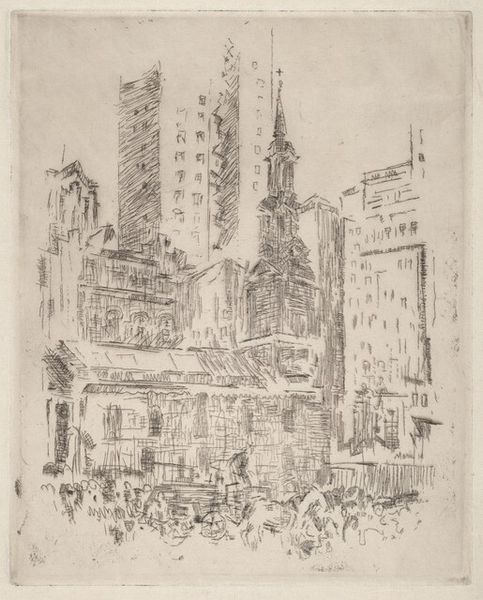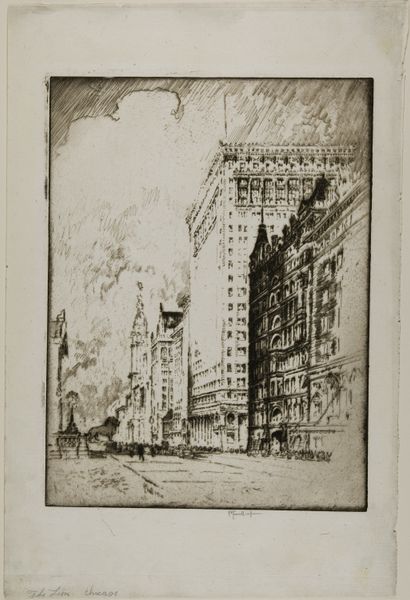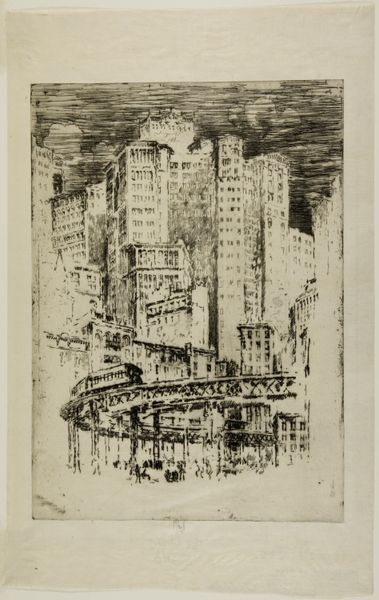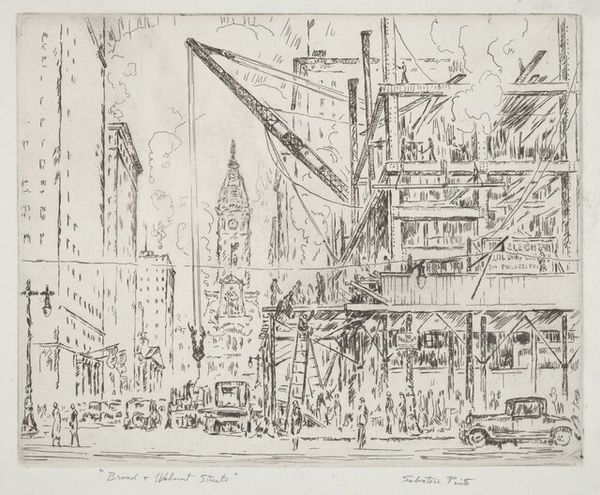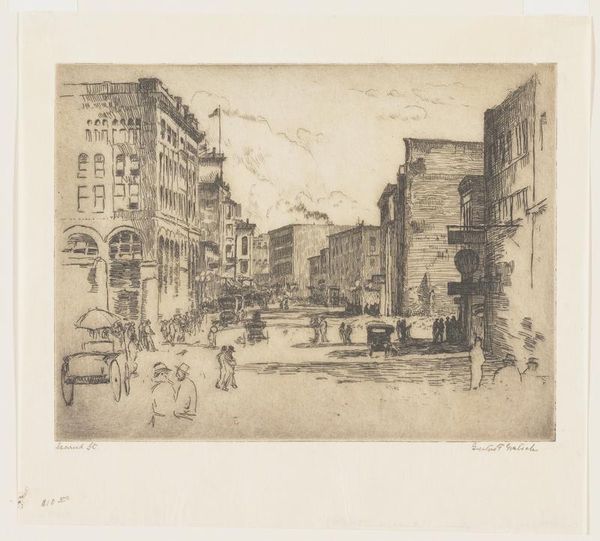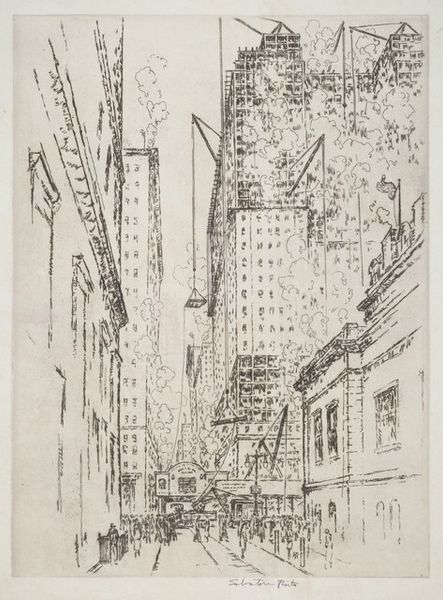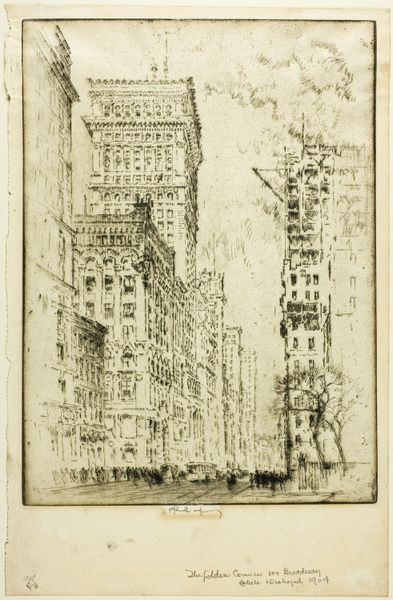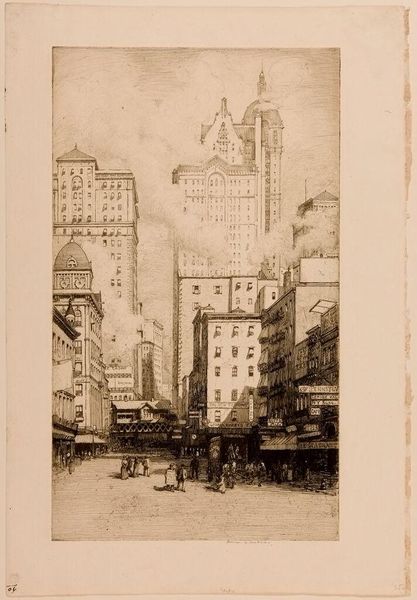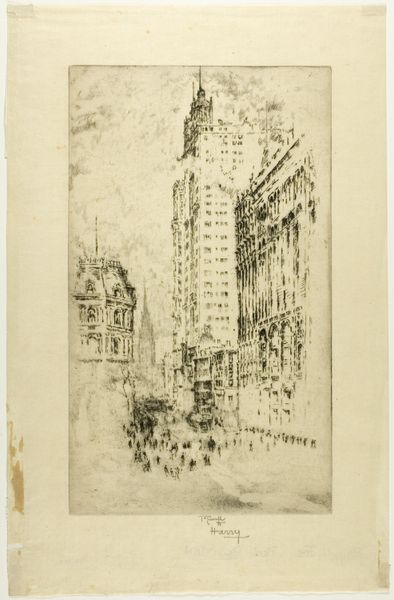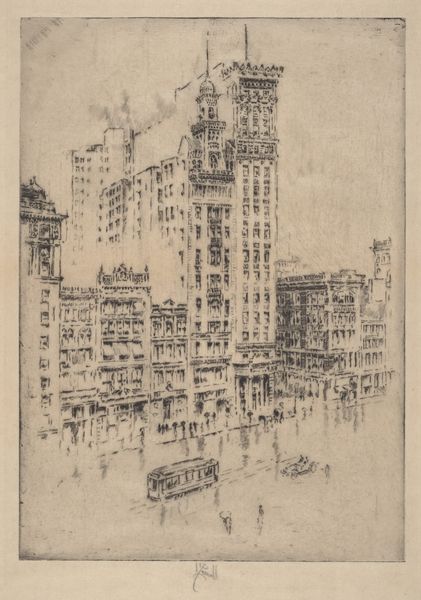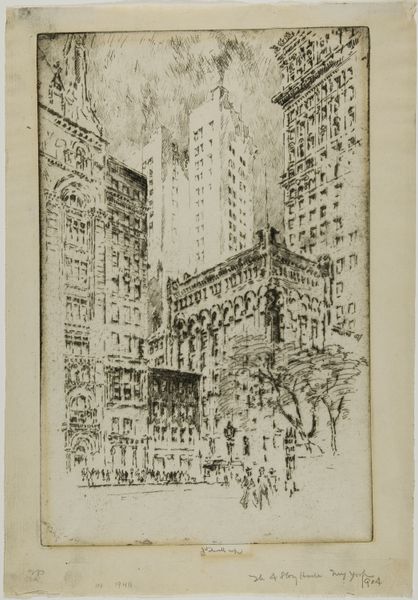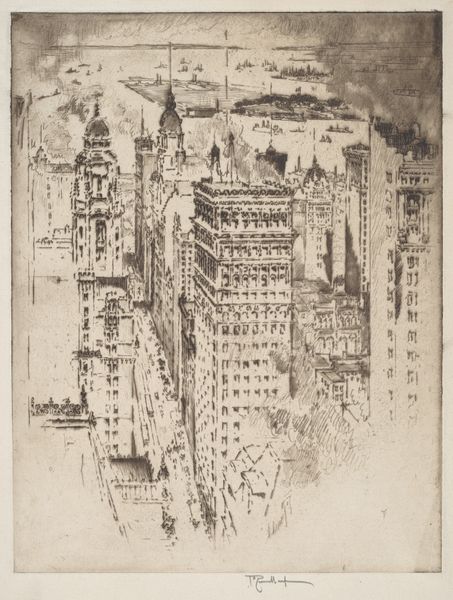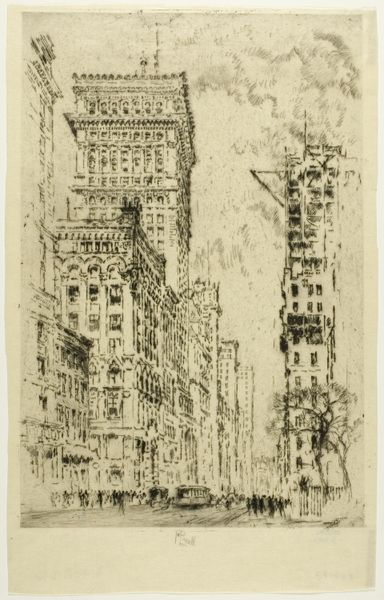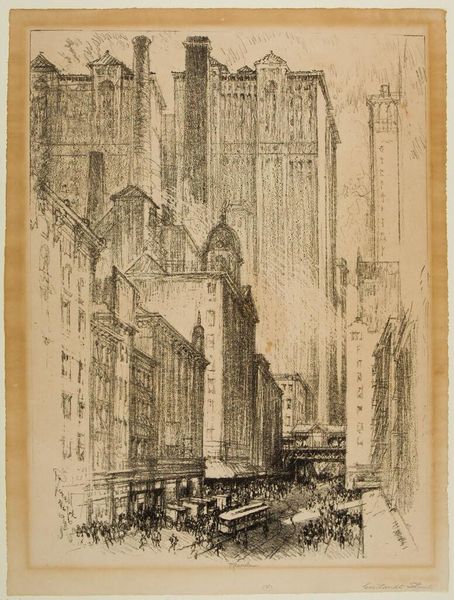
print, etching, architecture
# print
#
pen sketch
#
etching
#
line
#
cityscape
#
architecture
#
realism
Dimensions: image: 200 x 250 mm sheet: 295 x 380 mm
Copyright: National Gallery of Art: CC0 1.0
Curator: Welcome. We're standing before Louis H. Ruyl's etching, "Herald Square". Take a moment. What impressions does it evoke? Editor: It feels intensely busy, like a captured moment of bustling city life rendered with striking precision. The tonal range feels muted and grey overall. It's as though the scene exists just out of reach. Curator: That's quite astute. Ruyl masterfully captures the dynamism of New York. The composition is structured around perspectival lines that converge, guiding the viewer's gaze towards the heart of Herald Square. Consider how the intricate line work delineates form. What can we say of its effect here? Editor: The intricate detail, when seen within its time, signifies not merely visual accuracy but speaks volumes about urban expansion, and the city as an environment of both commerce and culture. These etched structures frame people both empowered and restricted by their places within society. Who benefits? Curator: An incisive point, to consider how economic forces literally frame human activity in these dense urban landscapes. Moving purely to compositional effects, the foreground teems with activity: vehicles, pedestrians, and then is elegantly framed by the architecture which repeats shapes found in that activity. Editor: Absolutely, it highlights class and race, who has the right of way in public space. Considering the gaze here as it is from the street, we might also consider the point of view from on high—where those in positions of privilege often survey such public thoroughfares and plazas below. It's a landscape of inequality and capital. Curator: It's true, there are socioeconomic currents rippling below what seems like urban documentation. Regardless, the realism presented here and level of visual complexity achieved by this use of the etching method displays profound talent. Editor: True—as a historical snapshot and material object it reflects back upon the now in ways that provoke reflection about who belongs in cities, how we participate in civic engagement, and whether these historical inequities endure even today. Curator: Indeed, and viewing the architecture as symbolic of human ambitions we might find inspiration through art that is dedicated to observing society. Editor: It certainly invites us to think deeply about these relationships between place, people, and power.
Comments
No comments
Be the first to comment and join the conversation on the ultimate creative platform.
